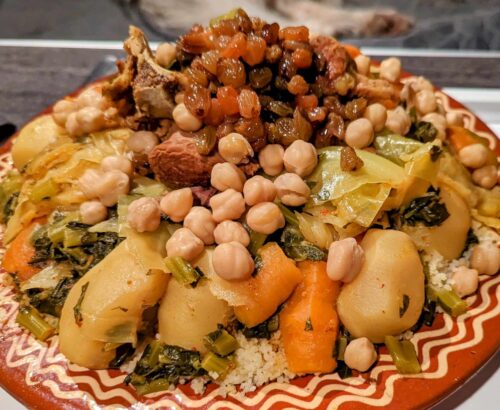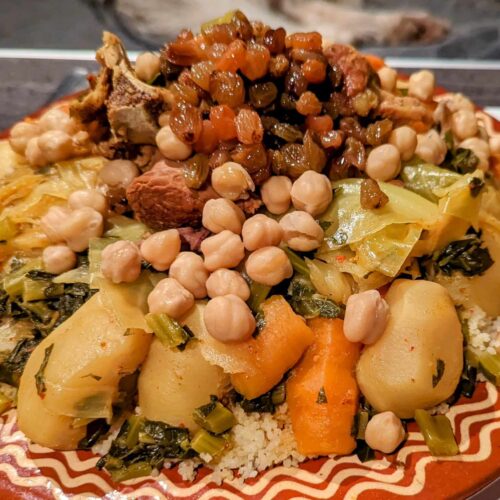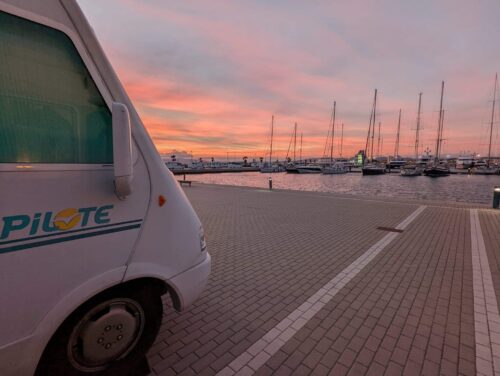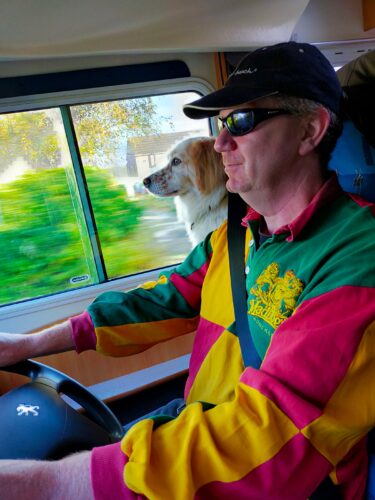Morocco Collection
Couscous

In Morocco, couscous is a staple food that is traditionally made by hand-rolling semolina flour and water. This process is quite meticulous and involves sprinkling water over the semolina flour and hand-rolling it to form small pellets. The pellets are then coated with dry flour to prevent them from sticking together and sieved to remove any lumps.
The hand-rolling process is a crucial part of making couscous in Morocco, as it gives the pellets their unique texture and flavour. The process is typically carried out by women in the family, and it is a time-honoured tradition that has been passed down through generations.
The result is a delicious and nutritious dish that is enjoyed by many in Morocco and beyond. Whether served with vegetables, meat, or fish, couscous is a versatile ingredient that can be prepared in a variety of ways. So, next time you enjoy a plate of couscous, take a moment to appreciate the hard work and dedication that goes into making this beloved dish.
There's more to couscous than just the pasta
Couscous, a tiny grain of pasta, is a popular dish in Morocco, and its invention is widely attributed to the Berbers. However, the term “couscous” does not only refer to the pasta but also to the dish itself in Moroccan cuisine.
Although instant couscous is readily available in supermarkets, it is not the same as traditional handmade couscous. The handmade couscous is not as fine as the instant variety, and the grains are closer to the size of peppercorns. This unique texture gives the couscous a distinct taste and makes it perfect for soaking up flavours in a stew or broth.
The Couscoussier
To prepare it, the couscous is steamed over a broth in a special pot called a couscoussier.
A couscoussier is a traditional double-chambered steamer used in Berber cuisine to cook couscous. This unique cooking pot is usually made of either traditional ceramic or metal. The larger pot holds water or soup that produces steam, while the smaller pot is designed to be placed on top of the larger one. It has a lid and a perforated base that allows steam to enter and seep through the couscous grains while keeping them in place. The couscous is cooked slowly, allowing the steam to infuse the grains with flavour and make them tender.
Overall, the couscoussier is an essential tool in traditional Moroccan cuisine, allowing couscous to be cooked to perfection and served as a delicious and aromatic dish.

Couscous (traditional method)
Equipment
- 1 Couscoussier
Ingredients
- 200 g couscous Coarse, not instant
- 50 ml olive oil
- 2 l water
- 2 to 3 tsp salt
- 2 tbsp soft butter
- 500 g beef, on the bone lamb, or goat meat, large pieces on the bone can also be used
- 1 large onion coarsely chopped
- 3 fresh tomatoes peeled and coarsely chopped
- 50 ml olive oil
- 1 1/2 tbsp salt
- 1 tbsp ginger
- 1 tbsp pepper
- 1 tsp turmeric
- 1 handful parsley and coriander sprigs - tied into a bouquet
- 2 tsp smen - Moroccan preserved butter - optional; reserve until end of cooking
Traditional Vegetables
- 100 g dried chickpeas soaked overnight
- 1/2 small cabbage cut in half or quartered
- 2 medium turnips peeled and cut in half
- 4 carrots peeled
- 1 small tomatoes peeled, seeded and quartered
- 1 small onion halved
- 1 small acorn squash quartered
- 2 courgettes trimmed, cut in half lenghtways
Instructions
- Soak the dried chickpeas in a large bowl of water overnight.
- Wash and prep your vegetables.
Make The Broth
- Brown the meat with the oil, onion, tomatoes and spices in the base of a couscoussier over medium-high heat. Continue cooking, uncovered and stirring frequently, for about 10 to 15 minutes, until a very thick and rich sauce begins to form.
- Add the soaked, drained chickpeas along with the parsley/coriander bouquet and about 1.5 l of water. Bring to a boil, cover, and cook over medium heat for about 30 minutes
Steaming The Couscous
- Drizzle the oil over the couscous. Toss and roll the couscous around to distribute the oil evenly.
- Add 100 ml of water and work it into the couscous in the same way--tossing and rubbing the couscous until it is well blended and there are no clumps.
- Transfer the couscous to a lightly oiled steamer basket. Place the basket on the couscoussier and steam for 15 to 20 minutes.
- Add the cabbage, onions, tomatoes to the couscous. Steam for a further 15 to 20 minutes.
Finish The Broth
- While the couscous is steaming for the final 20 minutes, add the turnips and carrots to the broth; cover and cook for 15 minutes.
- Add the remaining vegetables to the pot. Top with a little water if the level has dropped below the vegetables. Taste and adjust seasoning - it should be well flavoured. Cook for a further 10 minutes.
Serving The Couscous
- Turn the couscous out into abowl and work in the butter.
- Add the smen (if using) to the broth in the pot and swirl to incorporate.
- Work about 100 ml of the broth into the couscous. Arrange the couscous on a deep serving platter. Make a large indentation in the middle to hold the meat.
- Retrieve the meat from the pot and place in the center of the couscous. Top it with the cabbage and squash or pumpkin. Retrieve the other vegetables from the broth with a slotted spoon and arrange all around meat in pyramid fashion. Garnish with the chickpeas, chilli peppers and chopped coriander
- Drizzle several cups of broth carefully over the couscous. Offer the remaining broth in bowls on the side.
Notes
Why not have a look at my other sites....
Helping you save money on your everyday bills
Balancing finances isn’t easy. Often there doesn’t seem enough to go around, or there’s little left for the important things in life.
We would all like a bit extra to spend on the things we want to do, and it’s possible with a bit of thrifty living. This site is packed with hints and tips to save money, allowing you to do more of what you want.
Answering p-mails the world over
An ex street dog from Cyprus, an ex-pub dog from Devon, ex ex-overnight security dog and now enjoying my time travelling with my mum and dad.
My hoomans and I explore the world in their big white box on wheels, although that work fing gets in the way sometimes. So far we have travelled mostly around Europe, but have also been to Morocco in Africa.
Hope You Enjoy!
Please leave me a comment!



